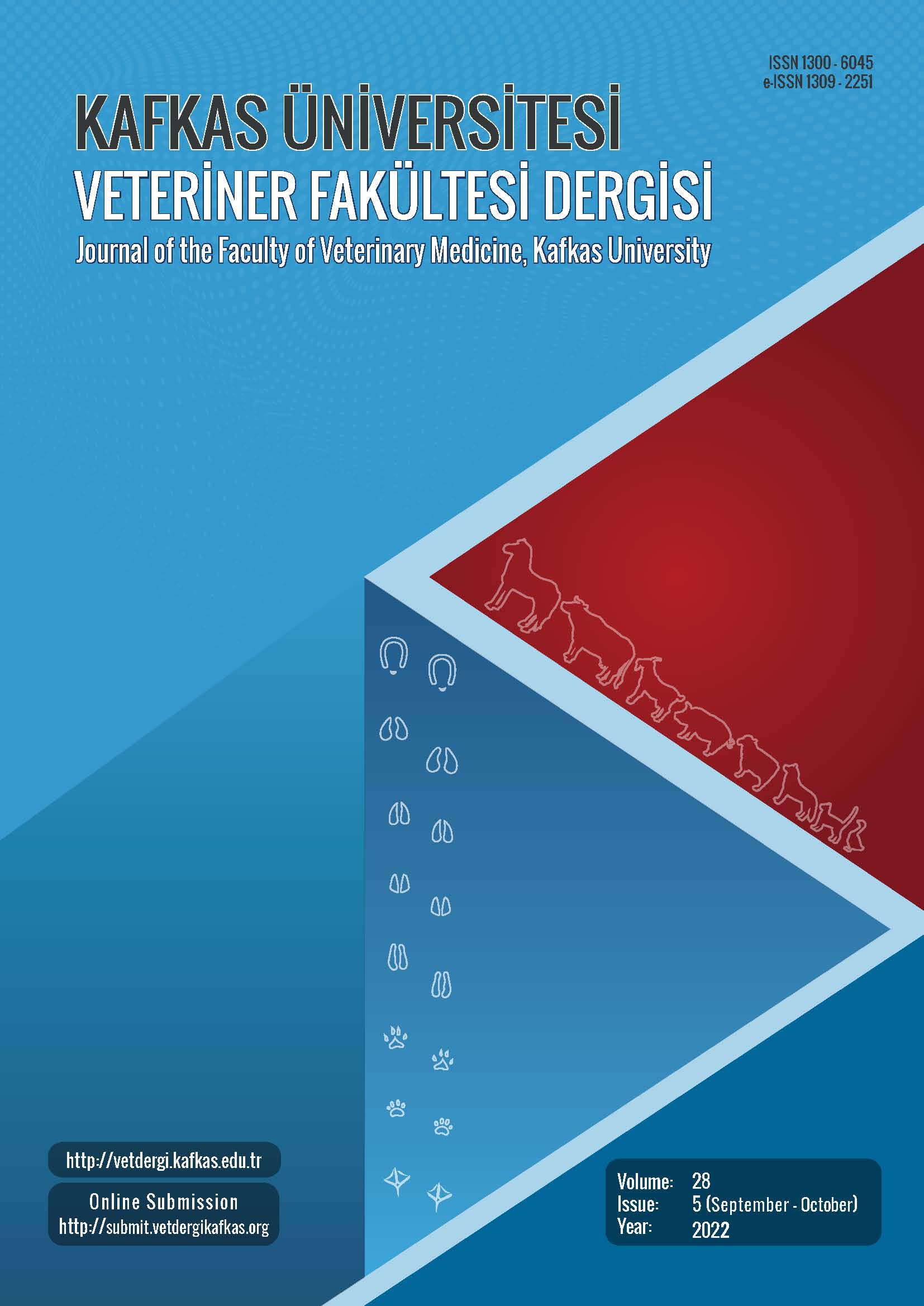
This journal is licensed under a Creative Commons Attribution-NonCommercial 4.0 International License
Kafkas Üniversitesi Veteriner Fakültesi Dergisi
2022 , Vol 28 , Issue 5
Comparison of Histopathological, Immunohistochemical and Real-Time PCR Methods for Diagnosis of Listeriosis in Ruminants with Encephalitis
1Kyrgyz-Turkish Manas University, Faculty of Veterinary Medicine, Pathology Department, 720044 Bishkek, KYRGYZSTAN2Selcuk University, Faculty of Veterinary Medicine, Pathology Department, 42130 Konya, TÜRKİYE
3Kastamonu University, Faculty of Veterinary Medicine, Pathology Department, 37200, Kastamonu, TÜRKİYE
4Istanbul Gelisim University, Faculty of Dentistry, Basic Science Department, 34295 Istanbul, TÜRKİYE DOI : 10.9775/kvfd.2022.27945 Encephalitic listeriosis is the most significant purulent encephalitis in ruminants and is a very common endemic problem in sheep, cattle, and goats. In this study, it was aimed to compare the presence of Listeria (L.) monocytogenes revealed by immunohistochemical (IHC) and Real-Time PCR methods with histopathological findings obtained from the archive materials. Th e study material consisted of pons and medulla oblongata paraffin tissue of 100 ruminants (9 cattle, 4 calves, 44 sheep, 38 lambs, and 5 goats). Positivity was obtained by the IHC method in 46 (46%) and by the Real-Time PCR method in 21 (21%) of 100 cases. In the L. monocytogenesis antigen IHC scoring, more severe staining was observed in sheep and goats (P>0.05). In the IHC positive cases, microabscess was more severe in sheep and goats than in cattle and lambs (P<0.05). In addition, 19 patients had Coenurus cerebralis cysts, and 3 of them were found to be positive for the IHC agent of Listeria. It was concluded that IHC and PCR methods can be used to detect L. monocytogenes from paraffin blocks, but the IHC method is a more eff ective method than PCR in revealing the presence of antigen from paraffin blocks stored for many years. Keywords : Histopathology, Immunohistochemistry, Listeriosis, Real-Time PCR, Ruminants










